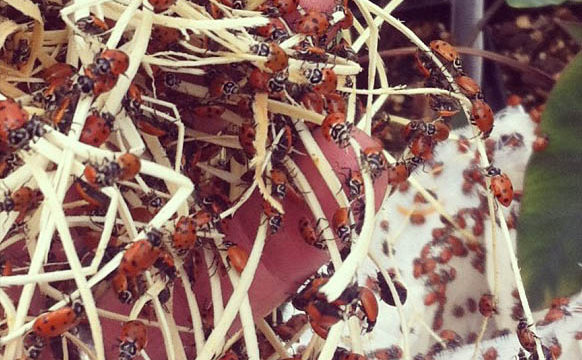It is understandable that pests and termites have gained a negative reputation in the human world. They have become so undesirable that people often times consider getting to know about the weakness of different types of termites in detail so that they can eliminate them. However, is that the right way to treat those creatures? Probably no!
Instead of spending money and time applying chemicals to control insect pests in your garden, put those dollars toward plants that will attract insects to do the work for you. Including the right perennials, herbs and flowering annuals to create shelter and food sources for predatory insects at different life stages can make your garden a balanced and self-sufficient ecosystem. Similarly, you can also consult Pest Control Experts in your vicinity who can guide you on what plants to put in the garden. The following principles can be applied to ornamental and vegetable gardens.

They sometimes eat the good bugs, too.
Even organic pesticides and OMRI-approved chemical controls can be harmful beneficial predatory insects creating a chemically dependent garden. In any food web, predator animal populations take much longer to recover than prey species. When you treat with chemicals to wipe out aphids and accidentally kill off the ladybugs, one surviving aphid will be able to produce thousands of new aphids right away – even without a male – while the ladybugs take much longer to come back. This is how gardens become chemically dependent.
Given a few seasons to fully develop and flourish, predatory insect populations will happily move into your garden habitat and munch those pesky slugs, caterpillars, aphids, mites, and more.
Who to invite, and who they’ll eat:
aphid midge | aphids, thrips, spider mites, fungus gnats
damsel bugs | eggs of many insect pests, leafhoppers, aphids, mites, Dicyphus whiteflies, aphids, thrips, spider mites
ground beetle | slugs, small caterpillars, grubs, some species feed on seeds and reduce weed seed populations in agricultural systems. Over 40,000 known species in the world.
soldier beetle | aphids, eggs and larvae of moths, butterflies and other beetles, spring tiphia wasp grubs
hoverfly, flowerfly | larvae feed on aphids, mealybugs, and other soft-bodied insects, adults feed on nectar and look like small bees but do not sting
lacewing | scale, sphids, mites, soft-bodied insects
ladybug | aphids, mites
syrphid fly predators | aphids and other soft bodied insects
minute pirate bug | thrips, aphids, mites, scales, whiteflies
tachinid fly | caterpillars, beetles, fly larvae
parasitic wasp | whiteflies, mealybugs, scales, moth, aphid, beetle and fly larvae
bee fly | larvae of grasshoppers, moths, flies and beetles
dance fly | voracious predators as larvae and adult with a diverse diet
jumping spiders, flower (crab) spider | neither of these spiders spin webs, instead stalking a wide variety of prey insects on plants
garden spider | this most beautiful spider will consume grasshoppers, moths and anything else that happens into its web, many other spider species are also great garden helpers and should be welcomed
praying mantis | anything smaller than the mantis is considered delicious!
Many insects have different feeding requirements during different stages of their development, so a diversity of plant material is essential to attracting them. Although beneficial insects do feast on pest insects, there may be certain points in their life cycles when their diets are confined to nectar and pollen. To attract these insects to your garden you need to provide host plants for food and shelter. Diversity in both plant material and season of availability (bloom time) is crucial. That said, finding certain plants can be difficult for people living in different regions. Such people can take the help of a local pest control professional by searching online. For instance, if you are someone from Roanoke, looking up ‘Roanoke exterminator‘ on the web can help you find a good pest control expert nearby.
Coming back to the organic ways, hand-picking the bad guys can be an effective way to keep damaging pests under control without risking collateral damage to the good guys in your garden. Especially when it comes to Squirrel Removal or similar wildlife, you need to do it manually. Row covers and succession planting of crops can also keep the flow of healthy, organic veggies to your kitchen without resorting to risky chemicals that inevitably result in friendly fire. When you’ve avoided using pesticides and have a variety of plants growing, you will find many good guys moving in. Watch for ladybugs, ground beetles, lacewings, hoverflies, true bugs, squirrels, and tiny wasps. These insects eat their prey directly (predators) or deposit their eggs on or into their host (parasitoids).
A garden insectary should be cultivated as an essential component of your garden, much like your water source and compost heap. We have created three predatory insect collections – flowering annuals, herbs and perennials. Our preselected collections can be purchased ready to plant, or you can choose a la carte to create your own unique blend of beneficial insect friendly plants.
